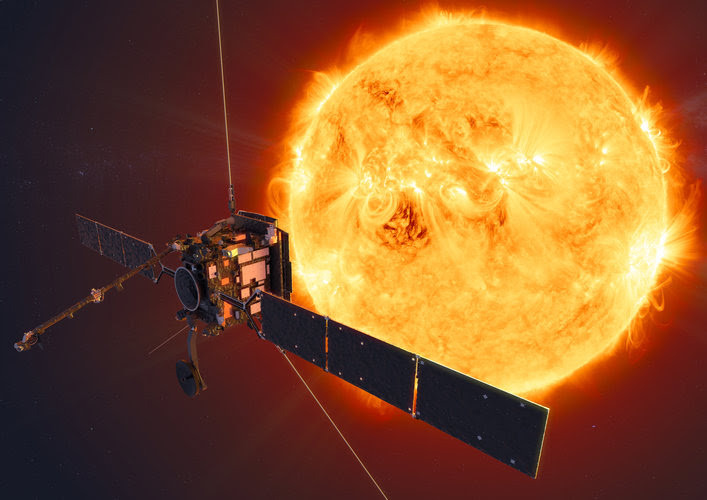
The targeted time for the launch of Solar Orbiter – an international collaborative mission between ESA (European Space Agency) and NASA – is 11:03 p.m. EST Sunday, February 9 (04:03 UTC Monday, February 10.). Translate UTC to your time. The spacecraft will launch on a United Launch Alliance Atlas V 411 rocket from Space Launch Complex 41 at Cape Canaveral Air Force Station in Florida.
Live coverage will begin on NASA TV on Sunday at 10:30 p.m EST (03:30 UTC Monday, February 10). Also, visit the agency’s website.
More information on the Solar Orbiter mission, prelaunch, and launch events is available at: https://www.nasa.gov/feature/nasa-to-broadcast-solar-orbiter-launch-prelaunch-activities
NASA said:
Solar Orbiter … will provide the first-ever images of the sun’s poles and the never-before-observed magnetic environment there, which helps drive the sun’s 11-year solar cycle and its periodic outpouring of solar storms.
ESA described Solar Orbiter’s path through space:
Solar Orbiter will take the first direct images of the sun’s poles, but getting into the right orbit to do this means taking a loopy path through the inner solar system, borrowing thrust from the powerful gravitational fields of Earth and Venus.
The animation below, from ESA, shows the trajectory of Solar Orbiter around the sun, highlighting the gravity assist maneuvers that will enable the spacecraft to change inclination to observe the sun from different perspectives.
Bottom line: Live coverage of the launch of Solar Orbiter will begin on NASA TV on Sunday at 10:30 p.m EST (03:30 UTC Monday, February 10).











